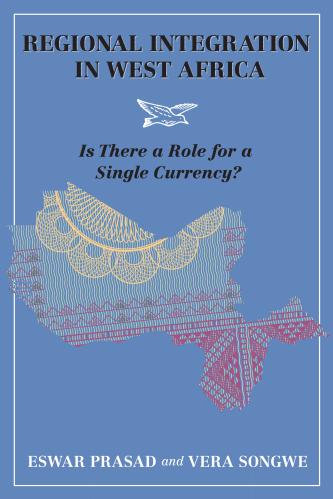India is unlikely to be the last country encountering catastrophic outbreaks as the COVID-19 pandemic persists and evolves. The lessons from India’s experience are especially relevant to other developing countries, like those in Africa, that will not benefit from the shield of mass vaccination in the near term. The overarching lesson is that COVID-19 is a “complacency virus”; its surveillance and suppression must be continually adapted.
The Indian second-wave outbreak is considered by the World Health Organization to have stemmed from the evolution of the highly transmissible B.1.617 or delta variant of the coronavirus, but catalyzed by a series of religious and political mass gathering events and reduced public health and social measures.
The delta variant was first reported in October 2020 and declared the fourth “variant of concern” by the WHO on May 11, 2021. In India, the spread of delta has dominated even that of the alpha B.1.1.7 variant (first identified in Kent, England), which itself was found to be 40-50 percent more transmissible than the original COVID-19 strain from Wuhan. Current estimates are that delta could be a further 60 percent more transmissible than Alpha.
Public-health policymakers, having become accustomed to less aggressive variants, appear to have been caught off guard by the delta variant. In fact, on February 21, 2021, Indian officials announced they had “defeated COVID-19.” A subsequent reduction in adherence to public health and safety measures was accompanied by an outright reduction in the stringency of COVID-19 protective measures in India, with the lockdown stringency index (a measure of public health and social measures) declining in March 2021 to its lowest value since the start of the pandemic. From mid-March to April a series of potential superspreader mass gatherings were permitted, including the attendance of an estimated 9.1 million pilgrims at the Kumbh Mela religious festival, and political campaigning for state elections in West Bengal, Assam, Kerala, and Tamil Nadu.
The result, as we are now aware, has been the catastrophic and deadly spread of a second wave of COVID-19 across India and elsewhere in the world. The lessons for African countries are twofold.
Lesson 1: Virus surveillance is key to stopping the pandemic
First, as the COVID-19 pandemic matures, so must virus surveillance. The evolution of new variants has emerged as one of the most important risk factors for outbreaks. Genomic sequencing helps build an early warning system for identifying the emergence of variants of concern, as well as the spread of these variants between countries. Doing so better informs public-health policymaking.
Already, the United Kingdom—a leader in COVID-19 genomic sequencing—has reviewed and adjusted reopening schedules on the basis of risk analysis that incorporates the emergence and spread of the delta variant. Genomic sequencing data in South Africa helped determine a change in vaccination strategy in response to the emergence of the beta (B.1.351) variant, which appeared more resistant to certain vaccines.
Unfortunately, Africa’s sequencing capacity remains extremely limited with almost half of African countries unable to share any genomic sequencing data on COVID-19 variants. African countries, accordingly, have an overclouded early-warning system with little visibility over emerging risks or the circulation of variants of concern. The WHO now encourages countries to “strengthen surveillance and sequencing capacities and apply a systematic approach to provide a representative indication of the extent of transmission of [COVID-19] variants based on the local context, and to detect unusual events.”
African countries have had considerable success in regional approaches to fighting COVID-19—including the Pan-African Medical Supplies Platform, harmonized “safe trade” protocols, and the work of the Africa Centers for Disease Control and Prevention. A regional approach to variant surveillance through regional sequencing hubs is now needed to pool resources and technical capacities. Development partners can assist in building this regional capacity through initiatives such as the U.K.’s New Variant Assessment Platform.
Lesson 2: Avoid complacency
The second lesson for Africa is simply to avoid complacency. Most African countries seem to have, so far, been spared the depth of crises experienced in other regions in the fight against COVID-19. As the Indian case shows, situations can deteriorate rapidly. In many of the African countries in which case sequencing data is available, the delta variant is on the rise. Policymakers must remain on top of evolving knowledge and preparations against COVID-19.
This can involve learning from outbreaks elsewhere and adapting capacity bottlenecks accordingly, as has been the case in Kenya, in which oxygen concentration machinery was imported to Nairobi’s Metropolitan Hospital following the experience of COVID-19 related oxygen shortages in India.
The evidence suggests that, overall, African countries are continuing to face the COVID-19 crisis with vigilance and caution. The stringency of the lockdown measures imposed by African countries has remained roughly constant since November 2020, notwithstanding some country idiosyncrasy. This is perhaps not particularly surprising; until mass vaccination is extended to developing countries, including those in Africa, they face little choice but invasive lockdown measures for supressing COVID-19, and, indirectly, their economies.
Unfortunately, mass vaccination remains distant upon the African horizon. Expediting it continues to be the ultimate prize for African policymakers and their development partners. Until then however, carefully following the lessons from India and other countries will continue to help African countries to manage their COVID-19 responses and make fully informed public health and economic decisions.
Figure 6. Stringency of Africa’s lockdowns over time, scale of 1 to 100 (white to red), January 2020 to June 2021
The Brookings Institution is committed to quality, independence, and impact.
We are supported by a diverse array of funders. In line with our values and policies, each Brookings publication represents the sole views of its author(s).















Commentary
What lessons can Africa learn from India’s COVID-19 crisis?
July 23, 2021